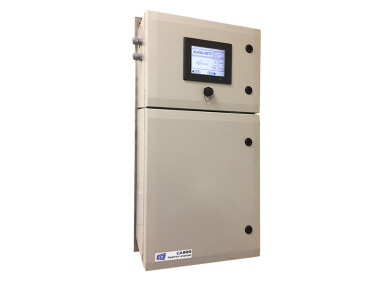Water/Wastewater
What Is Non-Target Screening (NTS)?
Jul 27 2022
Since all life on Earth depends on water for its survival, it’s important to ensure that the H2O we drink and with which we feed our animals and irrigate our crops is fit for purpose. That’s all the more true when the fact that scientists estimate there are more 86,000 chemicals in circulation in our environment is taken into account.
Traditionally, water analysis would rely on targeted screening methods, whereby researchers would analyse samples to identify concentrations of specific pollutants. However, due to the plethora of chemical compounds at play and the rising number of contaminants of emerging concern, more broad methods of monitoring are now required. That’s where non-target screening (NTS) comes into its own.
Casting a wider net
Due to the proliferation of chemical compounds that are now present in a wide range of manmade products and processes, targeted screening of water samples has now become insufficient. As a result, scientists have turned to NTS, which is capable of identifying a multitude of different chemicals in extremely low concentrations, all at the same time.
In this process, a generic analysis method such as high performance liquid chromatography with high resolution mass spectrometry (HPLC-HRMS) is used to detect all compounds present in the sample. These are then separated out and ionised using electrospray ionisation (ESI), before those compounds which can be identified using suspect-screening are removed from the equation. The remaining substances are analysed using NTS.
How does NTS work?
In order to identify compounds which targeted and suspect-screening could not, NTS measures their defining features. This may include (but is not necessarily limited to) their exact mass, their retention time, their isotope patterns and the fragmentation spectrum pertaining to them. All of this data is then cross-referenced with the information held in pre-existing databases to arrive at a diagnosis of which compounds are present in the sample.
In order to achieve a credible degree of accuracy in NTS, all findings must be compared to the relevant reference standard. Because there are such a high number of different chemical compounds present in the environment, and some of these are highly polar and extremely mobile, more sophisticated techniques of NTS are in development all the time.
What are the next steps?
Understanding the entirety of any problem is the first stage in overcoming it. With that in mind, the use of NTS to accurately identify every chemical compound in a water sample, including contaminants of emerging concern (CEC) and per- and poly-fluoroalkyl substances (PFAS), is an instrumental stage in keeping tabs on how clean our drinking water really is.
The next step is implementing the proper filtration techniques which can remove these impurities from the effluent. This is absolutely imperative when it comes to drinking water, but it should also become commonplace at wastewater treatment plants in the coming years. Conventional systems are not equipped to deal with the various types of CECs, but advances in technology will hopefully solve those problems in time.
Digital Edition
AET 28.2 April/May 2024
May 2024
Business News - Teledyne Marine expands with the acquisition of Valeport - Signal partners with gas analysis experts in Korea Air Monitoring - Continuous Fine Particulate Emission Monitor...
View all digital editions
Events
Jul 10 2024 Birmingham, UK
Jul 21 2024 Cape Town, South Africa
Australasian Waste & Recycling Expo
Jul 24 2024 Sydney, Australia
Jul 30 2024 Jakarta, Indonesia
China Energy Summit & Exhibition
Jul 31 2024 Beijing, China


















